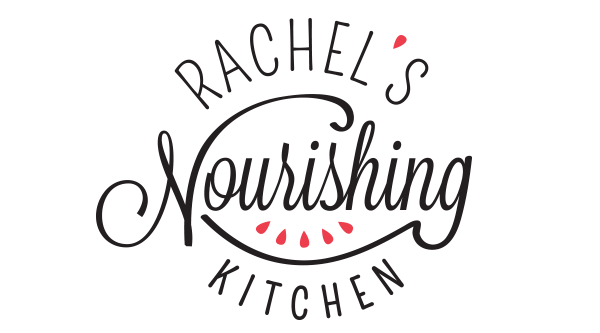Two years ago, I sat across the desk from a speech language specialist at the Johns Hopkins Voice Center at GBMC. I scheduled an appointment to see him because I had lost my voice yet again and couldn’t figure out why my voice became strained so easily and so frequently. This issue has been ongoing for years – since college – but it happened inconsistently, so I couldn’t pinpoint how to fix it. It kept coming back.
Since I speak for a living, not having my full voice and not knowing whether it would hold up and be strong enough to give a presentation concerned me. To add to that, I had been diagnosed about a decade ago with vocal nodules – hard, rough growths on my vocal cords that prevented me from using my full voice. I feared I was heading down that path once again.
I went through a series of exercises to assess my voice, my breathing, and my tone. At the end of the session, the speech pathologist commented that I have a tendency to push my voice out with my breath, which creates strain and taxes my voice.
Inspiration can come from the most unexpected places, and what he said next was likely insignificant to him but profound to me:
Voice is released, not pushed.
When we’re speaking and singing like babies do, we’re literally releasing air from inside our diaphragm over our vocal cords. That process creates sound. It’s effortless and easy, something we are born doing instinctively, not something we do consciously.
On the other hand, when we push too much breath pressure and force air through the voice box, we can blow out the vocal cords. Pushing our voice is unnatural. It taxes our vocal cords and causes us to experience strain and even loss of voice.
But I knew there was a deeper meaning to his words and that they extended beyond my voice.
Releasing vs. Pushing
For much of my life, I’ve pushed myself, especially academically and professionally. I had natural talents for certain things like writing and creative thinking, but I never rested on my laurels and always did more than was necessary to ensure I’d ace every assignment. Failure wasn’t an option for me. It wasn’t long before I equated working hard and putting in extra effort with being successful.
If something was easy, I assumed it was incomplete. I thought it had to be hard in order to be worthwhile. I was that kid that typed up my notes in the form of a study guide for every test, starting in middle school and running through college. I took perfectly good notes during class but had decided that not overdoing it would result in the unthinkable – something less than perfection. I’ve done the same in my professional life as well, ovedoing it and overdelivering for fear someone would deem my work (or, even worse, me) to be inadequate in some way.
I pushed myself. I wanted to be in control. I made sure I did everything in my power to guarantee success.
As I sat across from the speech pathologist, his words took on new meaning.
I was called to release what was inside of me, not push or force it out.
I’ve since reflected on some of the most meaningful and memorable moments in my life, particularly the ones that I didn’t orchestrate but simply invited in by being open.

During a semester abroad in Spain my junior year of college, my heart had been broken by a guy I liked. I so badly wanted to date him, but he had other plans. When the spring semester started, I noticed a cute guy who was a freshman but wrote him off for being too young. One year later, as I was graduating, I wrote in my journal, “I’ve started hanging out with this guy, Bill Druckenmiller. He’s kind of immature and will probably go home this summer and start dating Autumn.”
Bill and I have been together nearly 13 years and married for almost eight.
On the final day of the DISH award application for WELCOA’s Top Health Promotion Professionals in the U.S., I applied. I was one of over 200 applicants and did it on a whim, not thinking anything would come of it.
Five months later, I was named the #1 Health Promotion Professional in the U.S.
After giving an acceptance speech at their conference that spring, I wrote on the last page of my journal, “I will speak at WELCOA’s Summit next year.” I stored the journal in my nightstand and didn’t think twice about what I’d written down.
Until four months later, when I received a phone call from WELCOA, asking me to speak at their conference the following year.
In the months that followed, people started reaching out to me to do podcast interviews, and last year, some of my stories and words were quoted in three different books.
I’ve been invited on retreats with other thoughts leaders around the country, not because I asked to be but because I was in my lane, doing my thing authentically and passionately, and other people were drawn to me.
When I was diagnosed with Epstein-Barr Virus two years ago, I remember how hopeless I felt leaving the doctor’s office. Now what? How do I get better? I couldn’t force or will my body to recover. I had no answers and no direction.
Within two weeks, I received an email from my nutritionist that was sent out to her entire email list that read, “Still working on my PhD. My very final project is a literature review of Epstein-Barr Virus.”
I couldn’t believe what I was reading. I immediately reached out to her, hopeful and confident that she could help me heal. She did, and she has since published a book called The EBV Solution that includes my story of recovery.
When we are living in alignment with our calling and are on our path, we don’t have to force opportunities to happen. They will find us and be released into our care, sometimes falling right into our laps.
We have to continue doing the work and keep showing up for what we’re called to do, believing that what is meant for us will not pass by us.
It’s so easy to become distracted by what other people are doing, to become jealous of their opportunities or good fortune. When that happens, we can also feel resentful and bitter and get sucked into a vortex of comparison and feelings of inadequacy.
Why do they get to do that? Why not me? When will I get my shot?
That way of thinking steals our joy and perpetuates a scarcity mindset, something that has been a struggle for me. When we focus on forcing and pushing things, we end up feeling overworked, overextended, exhausted and inauthentic. The focus on what others are doing keeps us from doing our work and making our contribution.
I still get caught in the comparison trap, which is why I feel the need to remind myself, once again, that “voice is released, not pushed.”
A life of peace and purpose is one in which we are released and freed to be ourselves, not forced to push our way through to get what we want. What you release comes from the depths of who you are and is uniquely, inherently, authentically you.

If you’re interested in learning more about my speaking and training topics, feel free to send me a message, check out my speaker reel, and connect with me on my blog.
If you liked this article, I invite you to read past articles I’ve written:
- Reflect & Reset: Leaving Behind and Looking Ahead
- Rehumanizing the Workplace: Hope for the Future of Work
- Be, Belong, Become: A New Vision for the Workplace
- When the Student Is Ready, Breakthrough Appears
- SIGSpark: One Company’s Vision to Come Alive
- When the Truth Hurts: The Gift of Courageous Friends
- It’s OK to Be in the Middle of the Mess
This article was originally published on my LinkedIn page here.









